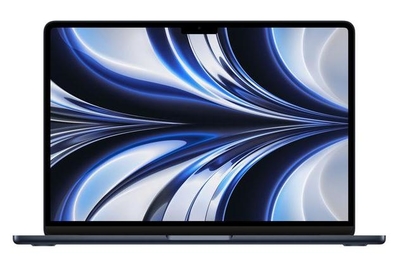We’ve seen the 13-inch M2 version regularly on sale for $950, and the 15-inch for $1,050, so don’t spend more. Any price lower than that is a good deal.
The MacBook we recommend

If you’re looking for a higher-powered MacBook Pro, we recommend that you skip the 13-inch version with an M1 or M2 chip, even if it seems like a great deal. Neither model is actually powerful enough for professionals, and both have a cooling fan that is irritating to listen to compared with the silent MacBook Air.
The best Mac for most people to buy is still the 13-inch M2 MacBook Air. It’s more than powerful enough for most people, and it has a great display and a slim, lightweight design. If you want a larger screen, a 15-inch version is available too. You can read more about the M2 MacBook Air in our guide to the best MacBooks.
While the M3 MacBook Pro is the cheapest of Apple’s new MacBook models at $1,600, that price gets you only 8 GB of RAM, which is insufficient for a modern editing laptop.
Apple just released new 14-inch and 16-inch MacBook Pro models ahead of the holiday season, and retailers are likely to be looking to get rid of older stock. If you’re shopping for a new or refurbished MacBook, you might be able to nab a good deal on a recently released laptop.
If you already own a MacBook with an M2 Pro or Max chip, you have little reason to upgrade to one with an M3 chip. Each generation of chip—from the M1 to the M2 to the M3—has been 20% to 25% faster according to our testing, which is significant. However, the chips are all objectively fast, and unless you’re in time-critical situations, you can save thousands knowing that you’re waiting only an extra few seconds to render and export a video scene.
This article was edited by Signe Brewster and Caitlin McGarry.
منبع: https://www.nytimes.com/wirecutter/blog/which-macbook-should-i-buy/?utm_source=rss&utm_medium=feed&utm_campaign=RSS%20Feed
The main appeal of the M3 MacBook Pro is the lower price for Apple’s fantastic pro-level XDR Display. But both the Air and Pro displays are impressively color-accurate, and unless you’re editing HDR video, there’s little need for the XDR display’s 1,600-nit peak brightness. Content looks better on the XDR display, but it’s really intended as a display for creating content rather than watching it.
How much RAM, or unified memory, a MacBook has is kind of like how big your physical desk or workspace is. With 8 GB, you have a smaller office desk; it’s fine for papers, some spreadsheets, maybe a few magazines in the corner that you’ll read later. But just as you need a larger desk for drafting architectural plans or a larger room to develop photos, you need more memory to do the same thing digitally. Upgrading to 16 GB of unified memory adds an extra $200 to the price, making the cheapest configuration we’d recommend $1,800. At that point, it’s a better deal to get a MacBook Pro with the M3 Pro chip, which offers 18 GB of unified memory and better performance than a model with the non-Pro chip.
One of Apple’s newest MacBook Pros is an entry-level 14-inch model with an M3 chip. (You can also buy a pricier 14-inch Pro with an M3 Pro or M3 Max processor.) We don’t recommend the cheapest M3 model, because most people can’t benefit from the extra features of the MacBook Pro, and most pros don’t want a relatively underpowered M3 chip. The M3 MacBook Pro is about a pound heavier than the MacBook Air and quite a bit thicker. We also think that most people aren’t likely to benefit from the extra ports on the Pro, such as the SD Card reader and the HDMI port. The models with the M3 Pro and M3 Max chips also have an extra USB-C port that the M3 version lacks.